
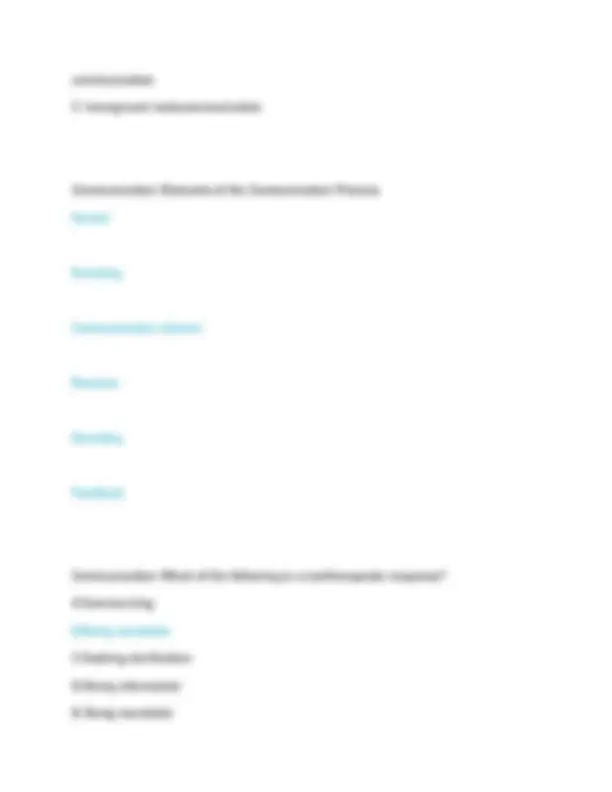
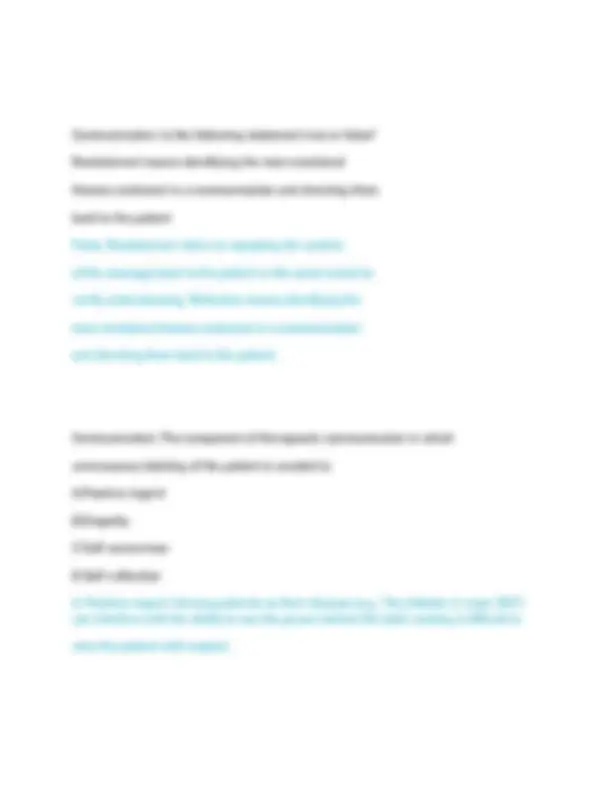
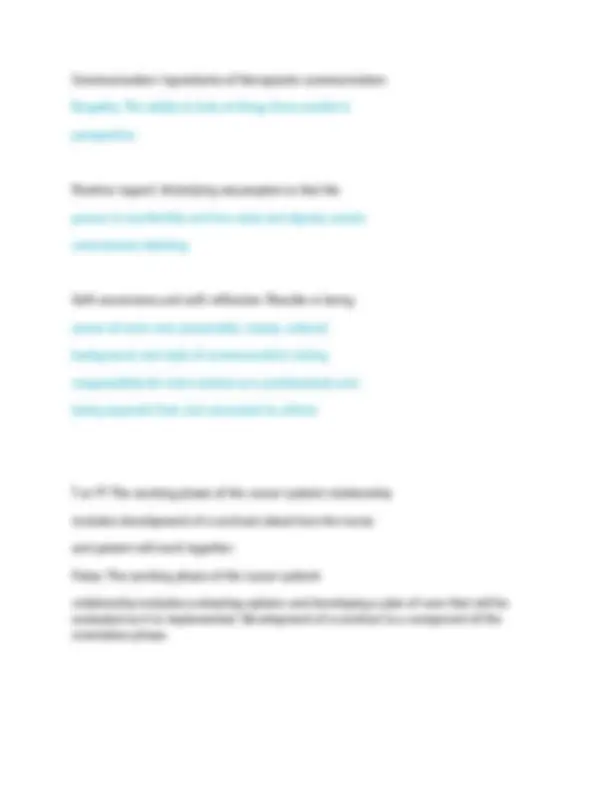
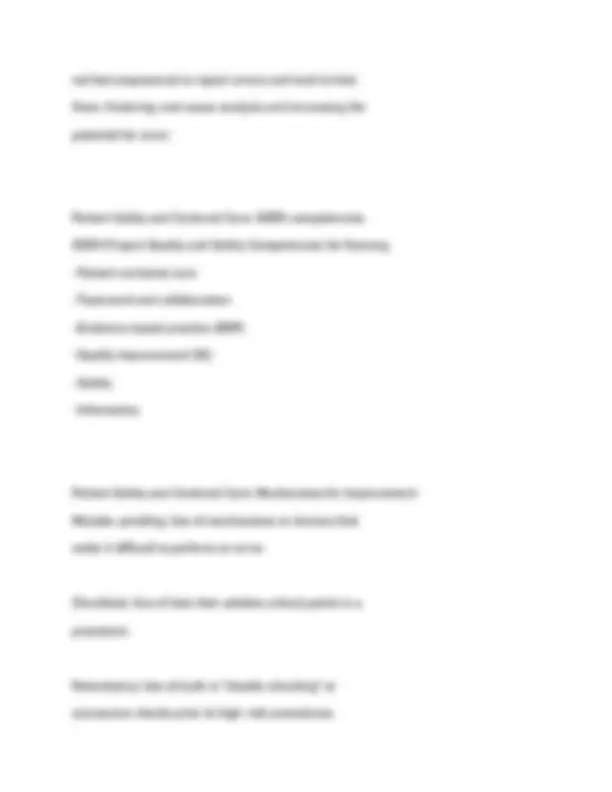
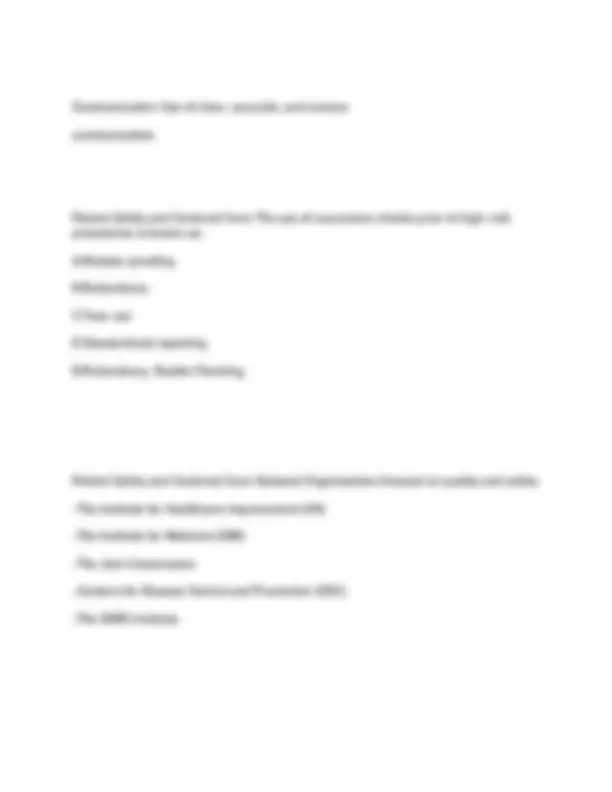
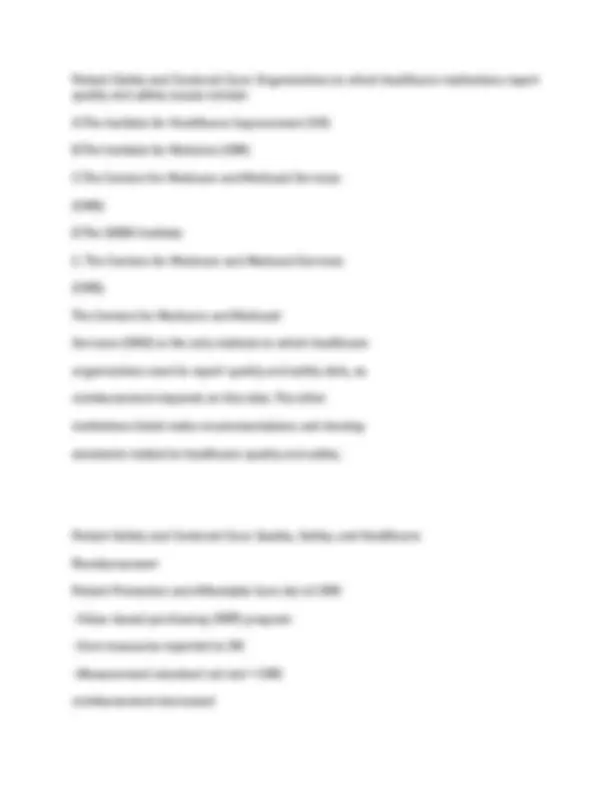

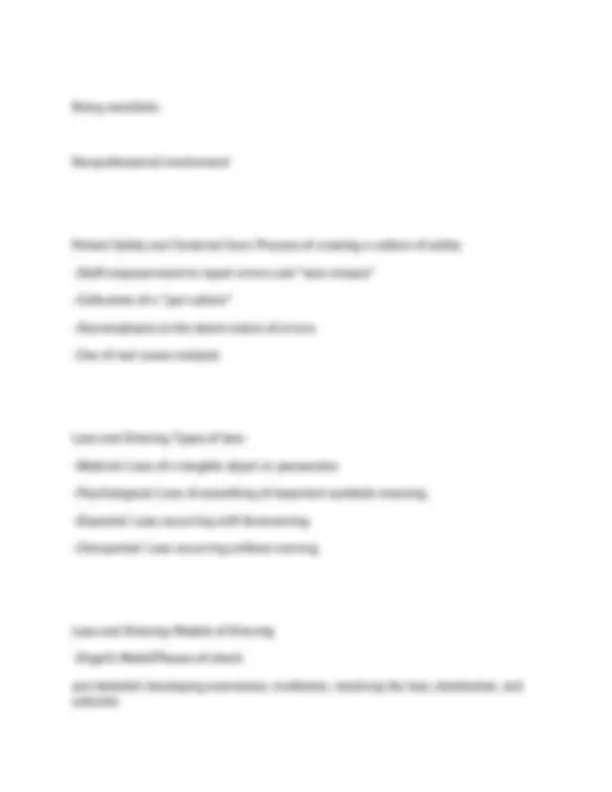
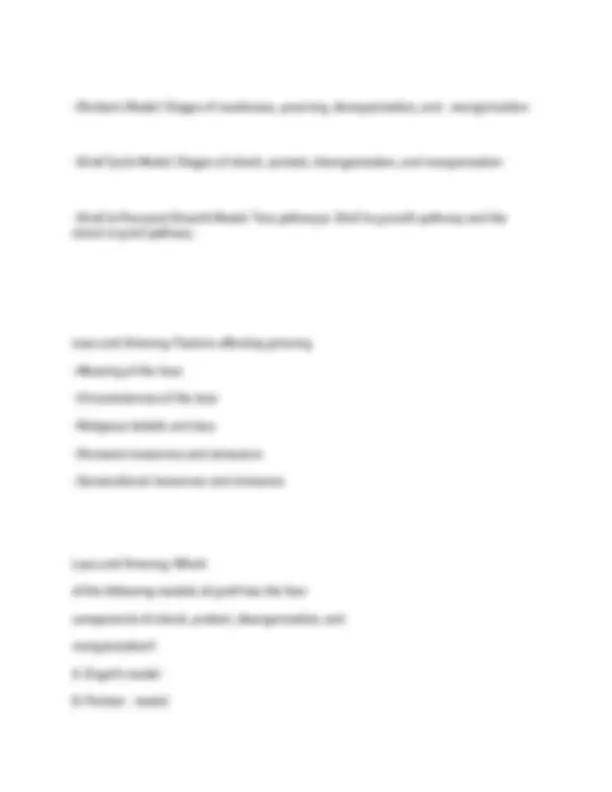
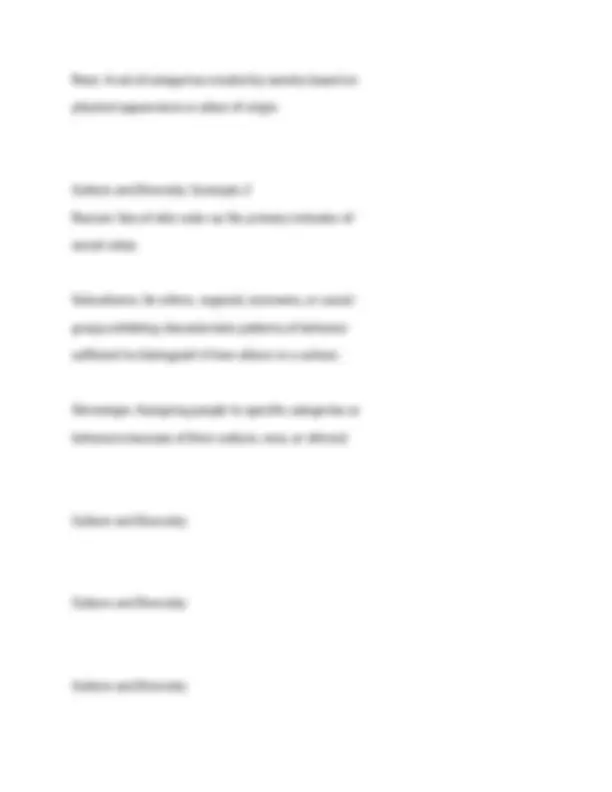
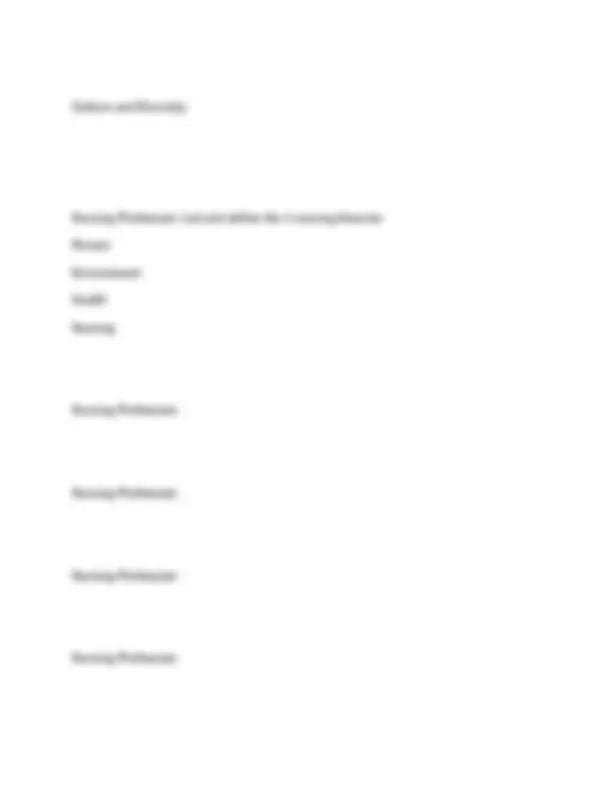

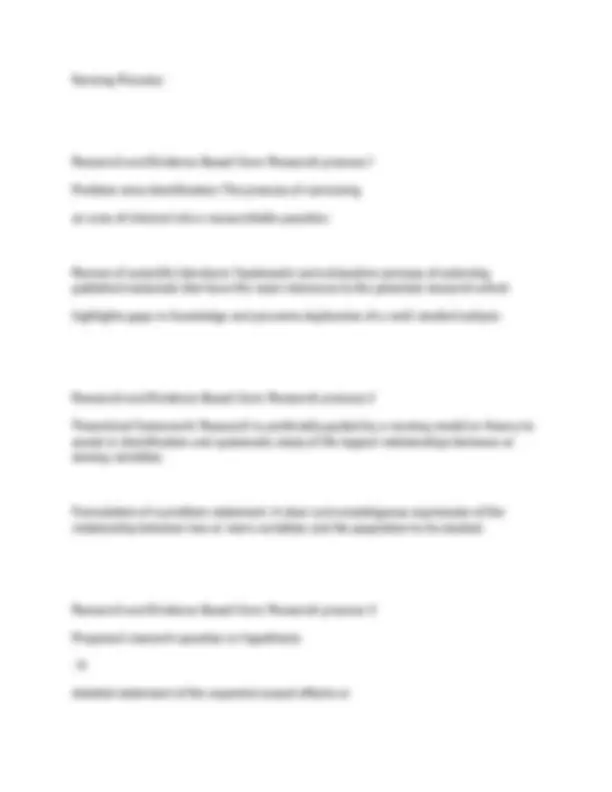
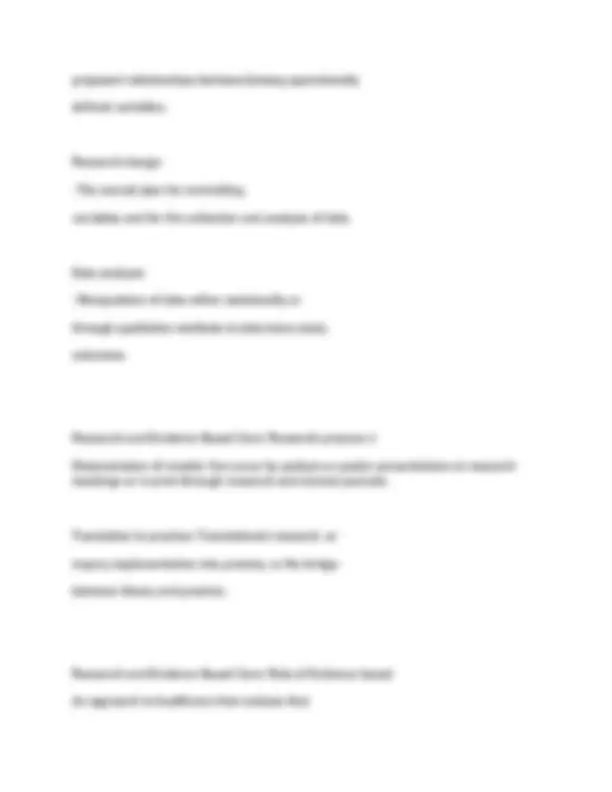
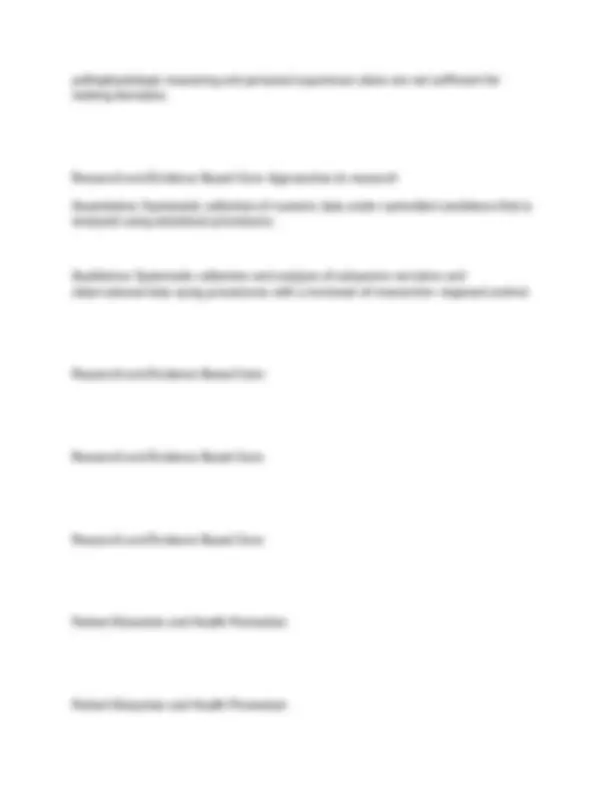








Study with the several resources on Docsity

Earn points by helping other students or get them with a premium plan


Prepare for your exams
Study with the several resources on Docsity

Earn points to download
Earn points by helping other students or get them with a premium plan
Community
Ask the community for help and clear up your study doubts
Discover the best universities in your country according to Docsity users
Free resources
Download our free guides on studying techniques, anxiety management strategies, and thesis advice from Docsity tutors
HONDROS NUR 190 2025/2026 Exam Transition to Practical Nursing Practice Question with Correct Answers Already A+ Graded
Typology: Exams
1 / 29

This page cannot be seen from the preview
Don't miss anything!






















Communication: What are the 3 types of communication? Describe each.
Communication: Incongruent relationship Relationships among written, verbal, nonverbal, and/or metacommunication are contradictory and give a "mixed message." Communication: During a review of a low-fat cardiac diet by the nurse, Mr. Jones has nodded his head several times in feedback. Later in the day when the nurse checks his dietary choices, it was found that he selected several foods on the menu that were the highest in fat. The type of communication that Mr. Jones exhibited was: A. Congruent metacommunication B. Therapeutic communication C. Incongruent metacommunication D. Elemental
Communication: Is the following statement true or false? Restatement means identifying the main emotional themes contained in a communication and directing them back to the patient False. Restatement refers to repeating the content of the message back to the patient in the same words to verify understanding. Reflection means identifying the main emotional themes contained in a communication and directing them back to the patient. Communication: The component of therapeutic communication in which unnecessary labeling of the patient is avoided is: A.Positive regard B.Empathy C.Self-awareness D.Self-reflection A. Positive regard. Viewing patients as their disease (e.g., "the diabetic in room 354") can interfere with the ability to see the person behind the label, making it difficult to view the patient with respect.
Communication: Ingredients of therapeutic communication Empathy: The ability to look at things from another's perspective. Positive regard: Underlying assumption is that the person is worthwhile and has value and dignity; avoids unnecessary labeling. Self-awareness and self-reflection: Results in being aware of one's own personality, values, cultural background, and style of communication; taking responsibility for one's actions as a professional; and being separate from, but connected to, others. T or F? The working phase of the nurse−patient relationship includes development of a contract about how the nurse and patient will work together. False. The working phase of the nurse−patient relationship includes evaluating options and developing a plan of care that will be evaluated as it is implemented. Development of a contract is a component of the orientation phase.
Genetics examines the functioning and composition of a single gene, genomics addresses all genes and how they are related in order to try identify their combined influence on growth and development on an organism Patient Safety and Centered Care: Concepts Quality: Excellence or superiority of something; often viewed as a continuum Safety: The avoidance or prevention of adverse outcomes for patients. Patient Safety and Centered Care: Quality Healthcare
not feel empowered to report errors and tend to hide them, hindering root cause analysis and increasing the potential for error. Patient Safety and Centered Care: QSEN competencies QSEN Project Quality and Safety Competencies for Nursing
Patient Safety and Centered Care: Organizations to which healthcare institutions report quality and safety issues include: A.The Institute for Healthcare Improvement (IHI) B.The Institute for Medicine (IOM) C.The Centers for Medicare and Medicaid Services (CMS) D.The QSEN Institute C. The Centers for Medicare and Medicaid Services (CMS) The Centers for Medicare and Medicaid Services (CMS) is the only institute to which healthcare organizations need to report quality and safety data, as reimbursement depends on this data. The other institutions listed make recommendations and develop standards related to healthcare quality and safety. Patient Safety and Centered Care: Quality, Safety, and Healthcare Reimbursement Patient Protection and Affordable Care Act of 2010
"Never Events"
Care bundles: Combination of patient care elements into "bundles" that are consistently used as a whole Patient Safety and Centered Care: Specific Tools for Quality and Safety Improvement # TeamSTEPPS: Evidence-based toolbox of
Focusing Encouraging elaboration Seeking clarification Giving information Looking at alternatives Using silence Summarizing Communication: Non-therapeutic responses Rescue feelings False reassurance Giving advice Changing the subject
Being moralistic Nonprofessional involvement Patient Safety and Centered Care: Process of creating a culture of safety
C. Grief cycle model D. Grief to personal growth model C. Grief cycle model Loss and Grieving: Culture and Diversity: Characteristics Culture is learned: Learned through sustained contact between groups and repeated observations of and participation in the group. Culture is shared unequally by its members: Knowing a cultural norm does not enable one to predict a person's response. Culture is dynamic: Culture change occurs as people come into contact with new beliefs and ideas. Culture is diverse: The cultural diversity of a population increases the plurality of ideas and options for behavior,adding to the texture and complexity of the society and increasing the potential for well-being, achievement, tension, and conflict. Culture is reasonable from the perspective of its members. Culture is not easily described by its members:Much of culture is implicit—a combination of habit and assumptions about the world.
Culture is ethnocentric: One views his/her own culture as the only correct standard by which to view people of other cultures. Culture is relative: Cultures relate different meaning to the same given situations. Culture is pervasive and holistic: Culture links a wide variety of behaviors and events uniquely and holistically. Culture is ritualistic: Rituals are common and observable expressions of culture that may help restore a sense of control, competence, and familiarity in times and places of stress and uncertainty. Culture is recognizable at many levels. Culture and Diversity: Concepts related to culture Ethnicity: Self-conscious, past. oriented form of identity based on a notion of shared cultural and perhaps ancestral heritage. Minority: Group of people within a society whose members have different ethnic, racial, national, religious, sexual, political, linguistic, or other characteristics from most of that society.
Culture and Diversity: Nursing Profession: List and define the 4 nursing theories Person Environment Health Nursing Nursing Profession: Nursing Profession: Nursing Profession: Nursing Profession:
Nursing Profession: Nursing Profession: Nursing Profession: Nursing Process: Nursing Process: Nursing Process: Nursing Process: Nursing Process: